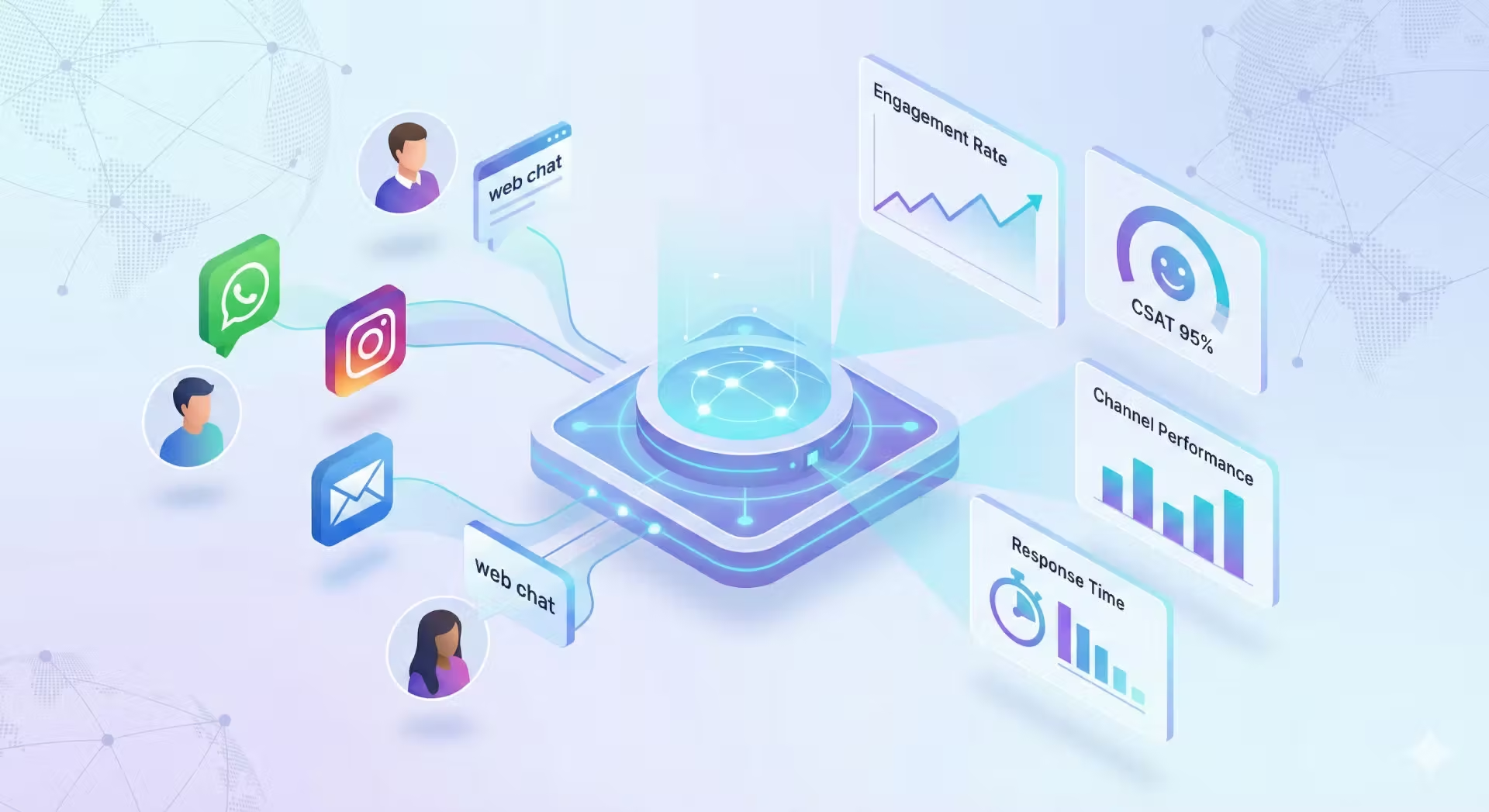Think about the last time you had a question about a service or product. Were you promptly acknowledged? Did your question get answered quickly? If not, did you move on to another brand? If so, you’re not alone – and you’ve experienced why it’s so important to focus on the right customer service metrics.
Statista surveyed 1,100 people and found several industries that would lose 25 percent of their customers due to poor customer service. When you think about how hard you work and how much you spend to acquire your customers, a 25 percent churn rate is scary.
Even when you have an omnichannel platform, you still need to measure the effectiveness of the customer service you’re providing.
KPIs, or key performance indicators, are how you measure how well or how poorly your company and its team members are performing. They’re what leaders use to make smart business decisions.
There are so many different things you can measure, but you can’t measure everything. It just depends on what industry you’re in as to what makes the most sense. In this post we’re going to look at three customer service KPIs to focus on in 2022:
- Customer Satisfaction Score, aka “How happy are your customers?”
- Average first response time, or “How fast are you making an initial reply?”
- Average resolution time, or “How fast are you solving the problem?”
We chose these three KPIs because of the aspects of customer experience that they track. They are also relatively easy to measure and there are many things you can do to make improvements once you have the results.
Customer satisfaction (CSAT) score
It’s up to you as the owner or the manager to know if your customers are satisfied. How do you know where to make improvements if you don’t know anything about the current level of satisfaction? The CSAT is where you’ll find the answers.
CSAT is the metric that shows how happy your customers are with your service. You can send out a 1-question survey after a specific interaction and quickly measure the success of that interaction. This is how you can find your CSAT score:
- Ask your customers, “On a scale of 1–5, how satisfied are you with our product or service?”
- Add all of the responses that are 4s and 5s.
- Divide the sum by the total number of responses.
- Multiply the result by 100 to get the percentage of happy customers.
This article spells out more best practices for sending out customer satisfaction surveys. It circles back to continuous improvement. You’ll achieve that by setting a goal for the KPIs that you’re measuring, reaching your goals, then setting new goals. In this way, you can identify possible areas of improvement, whether it be for a specific team member or for an overall process.
Average first response time
The average first response time KPI stands for how fast you are responding to new customer service inquiries. It is calculated by taking the sum of all first response times and dividing by the total number of tickets.
The first response time is so important because it’s setting the stage for your relationship with this person. The first response is an acknowledgment that the message was received. Everyone wants to be heard. It should go without saying, the faster you respond to customers, the happier they will be.
This KPI is usually measured in minutes, hours, or days. Let’s just say, for example, that you are measuring in minutes, and you want to know what your average first response time was for a particular day. For simplicity, we have three inquiries today:
- Inquiry No. 1 was responded to in a record five minutes. Nice.
- Inquiry No. 2 received a response in 33 minutes.
- Inquiry No. 3 was responded to after 75 minutes.
In this example, you add the response minutes together for 113 minutes. Divide that by 3 inquiries and, for today, the average response time from your team was 37 minutes. Big picture says that a faster response time is possible. How?
If the customers’ question or problem can be resolved in that first response, great. However, the first response shouldn’t be delayed because of trying to answer the question. The direction should be clear for your team:
- If you know the answer, acknowledge the inquiry and give them the answer in that first reply.
- If you have to look it up, your immediate action should be to respond to the inquiry to let the customer know you’re working on the problem. Then you can look up the appropriate response.
Average resolution time
Of course, the real test of customer service is solving customers’ problems in a timely way. The average resolution time is the amount of time it takes to completely resolve an inquiry. As opposed to the average first response time, this is total start-to-finish time. The clock starts ticking when the request comes in and stops when the customer’s issue is fully resolved.
Tracking and calculating average resolution time could be a nightmare if you had to do it manually, but you don’t have to do the math yourself for this KPI. Trengo shows you what you’re looking for in the reports. Not only that but you can sort it out in a variety of different ways to see where your team’s performance is strong and where it can improve.
Keep your KPIs up to date
KPIs are never a one-and-done. All of these KPIs require that you measure, evaluate, and measure again. You want to see improvements over time. If you find that your response rate is low, make an adjustment and measure again. If there is no improvement, then you need to try something different.
As the manager, you must do everything you can to make it easy for your team to provide good customer service. With all of the places your customers can contact you, keeping up with messages can be a nightmare. Funnel them into one place and your customer service team will have a fighting chance at responding to every inquiry. After all, every inquiry is an opportunity to win over a new customer or keep an existing customer, so you have to do it well.
Combine your omnichannel platform with some pointed KPI measurements and your customer service team will soar. With a little work and the right tools, you can nail these KPIs and more in the coming year.




.png)











